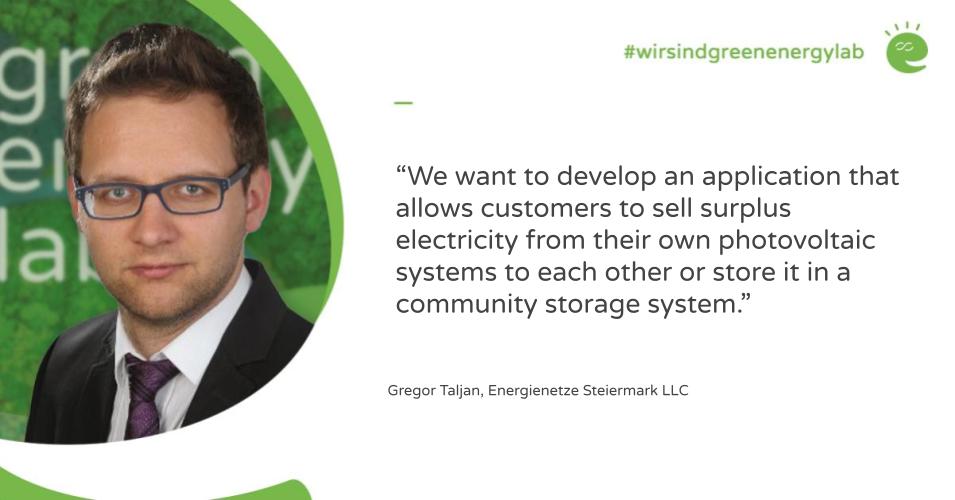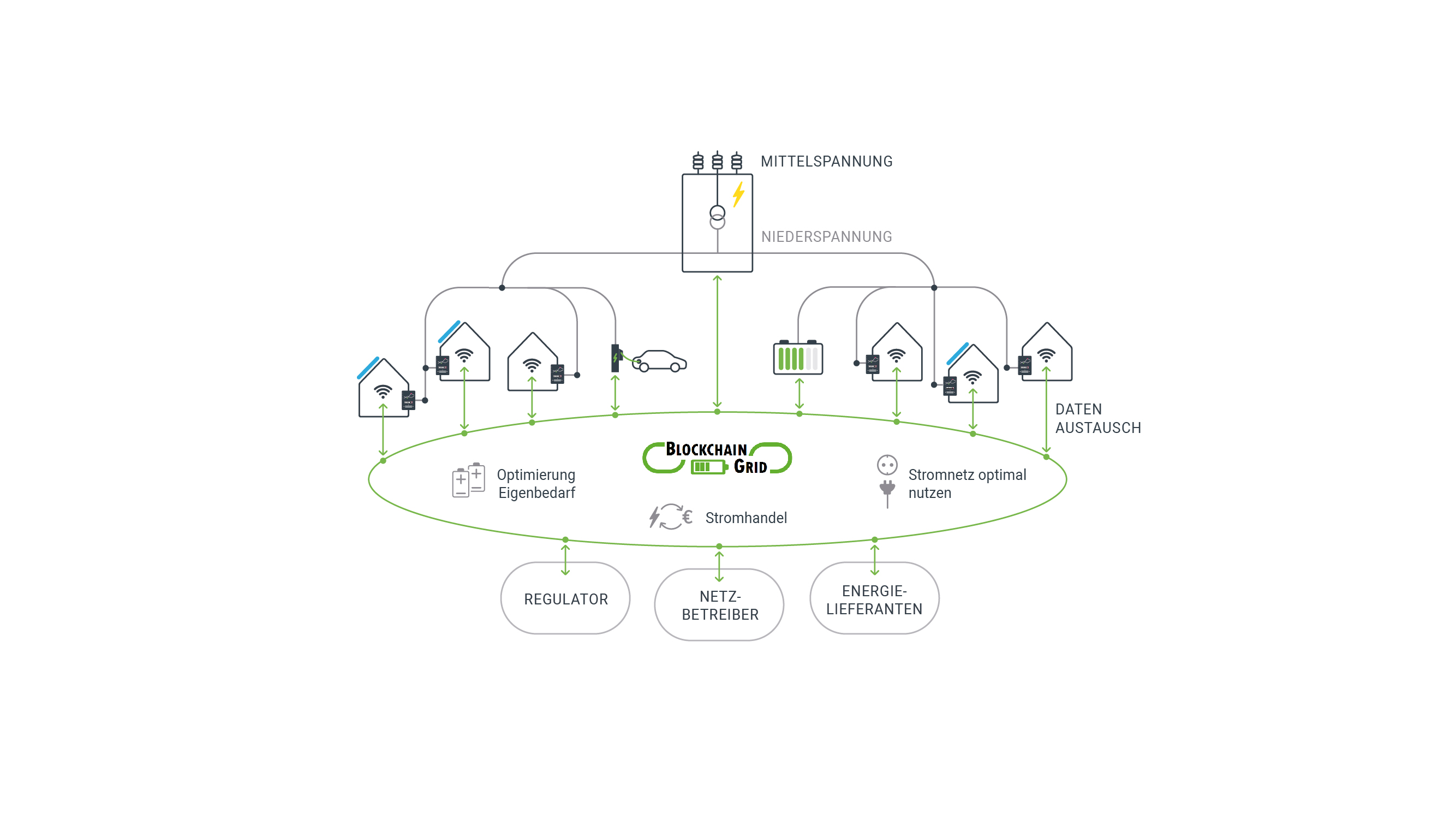Blockchain Grid
Based on blockchain technology, retrieval of flexible capacities in distribution grids
This research project has been completed. Access the Blockchain Grid Results Fact Sheet or download the Publishable Final Report here.
New requirements for low-voltage distribution grids must be met due to the increasing number of renewable generation plants, but also due to the ongoing electrification of other sectors
(e.g. transportation, heating). This development is accompanied by a paradigm shift. It is already becoming apparent that the predictable consumption behavior of grid customers, which is the basis of today’s grid planning, can no longer be guaranteed. It is therefore necessary to move away from a purely primary infrastructure, which is designed to cover 100% of a worst-case scenario, towards a capacity-controlled infrastructure.
Objective of the Blockchain Grid project
Blockchain Grid is able to turn the conventional approach of most congestion management strategies for distribution grids on its head. The project did not address the question of how to deal with congestion, but how to exploit the remaining free grid resources (time-variable power and voltage bands) for the benefit of prosumers and energy communities. It also enabled the local use of locally generated electricity through use cases such as local peer-to-peer trading and the use of a community storage system.
Approach and methodology of the Blockchain Grid project
This approach was enabled by combining blockchain and IoT technologies into a system that supports the future needs of grid customers and energy communities. The implementation of a distributed blockchain-based application should enable prosumers to share free grid resources for their surplus generation and load, with the distribution system operator acting as an intermediary.
The technical and organizational requirements for a distributed solution were analysed, in which grid customers can share free grid capacities and sell or store their surplus electricity from renewable energies locally. Another focus was on possible regulatory concepts and the challenge of creating a level playing field for all grid participants, as users are physically different depending on their location in the grid.
One part of the project was the design of a prototype blockchain-based solution, which was implemented in a real field test environment in the municipality of Heimschuh in the Austrian province of Styria.
Links:
Video about the project:
You are currently seeing a placeholder content of YouTube. To access the actual content, click on the button below. Please note that data will be passed on to third-party providers.
The following model solutions were being developed in the Blockchain Grid project:
BLOCKCHAIN-BASED PEER-TO-PEER TRADING
BLOCKCHAIN-BASED BATTERY STORAGE
BLOCKCHAIN-BASED MANAGEMENT OF NETWORK UTILIZATION
Media reports on the project
Implementation of the Blockchain Grid project presented at the press event on 19 October 2021
Energy community in Heimschuh as a Europe-wide showcase project for the future of energy: save up to 450 euros a year with solar power.
To the articleBlockchain grid in the fast lane
The increasing number of generators from renewable energy – for example, through own photovoltaic systems – and consumers, such as electric vehicles, are creating new challenges in low-voltage electrical grids.
To the articleDoing laundry with the neighbor's electricity
In future, people will be able to sell their own solar power in local energy communities. A practical test will start in Styria in November.
To the articleGreen Energy Lab: Cleaner solar power, lower costs
A Styrian technology project is playing out the future of innovative electricity markets: more clean electricity that costs less - and could even prevent blackouts in the future.
To the article



